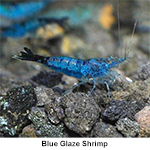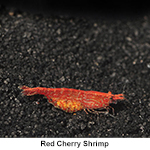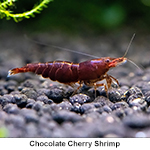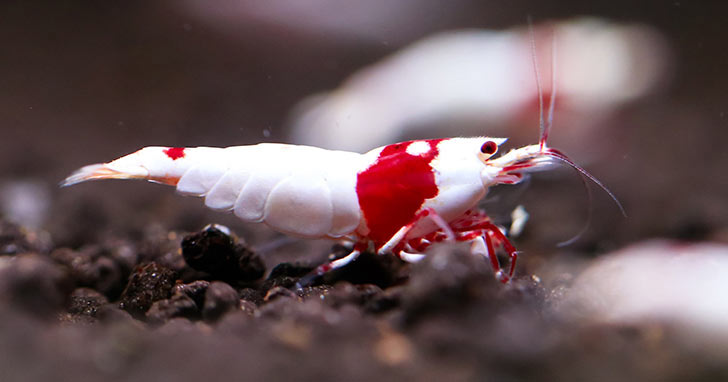|
Whether you are setting up a new aquarium or thinking of adding another species to your freshwater tank, do you immediately think of what other fish to add? There are many fish and inverts that are suitable in a community tank. But why not consider adding inverts – and specifically shrimp?
When selecting shrimp, there are species that live in marine or saltwater environments, and species that live in freshwater environments. We will explore five reasons to add shrimp to your freshwater aquarium.

- Including shrimp in your freshwater tank immediately adds color, beauty, and interest
If you have fish swimming in the middle and upper areas of your aquarium, shrimp can add an additional level of interest, as they live in the bottom of your tank. Shrimp also come in a variety of looks with striking colors and patterns, so can add hues of black, green, tan, white, red, orange, yellow, and even blue to your tank. There are also varieties that are translucent and are fun to find and watch.
- Shrimp provide beneficial value to your tank by helping to keep it clean
They are scavengers by nature and eat algae from plants and surfaces, leftover food, and some of the other dead matter settling in your tank. You may need to supplement their diet with food pellets or flakes if there is not enough organic matter for them to eat.

- Shrimp are great tank mates for a community aquarium when introduced to other species with peaceful temperaments
When adding freshwater shrimp to your community tank, they should be housed with fish that have peaceful temperaments and not aggressive fish or large carnivores such as loaches or puffers that feed on invertebrates.
Like all invertebrates, shrimp are sensitive to copper so copper-based medications should never be used in aquariums housing ornamental invertebrates.
When beginning to add invertebrates, many home aquarists select a freshwater shrimp that have an easy care level. Easy to care for freshwater shrimp that LiveAquaria® offers belong to several genus and species including Atya gabonensi (such as Viper Shrimp), Atyopsis moluccensis (such as Singapore Flower Shrimp), Caridina japonica (such as Japonica Amano Shrimp), Neocaridina davidi (such as Yellow Shrimp, Black and Blue Rili Shrimp, Orange Rili Shrimp, Bloody Mary Shrimp, Blue Velvet Shrimp, Red and Blue Rili Shrimp), Neocaridina denticulata (such as Carbon Rili Shrimp), Neocaridina sp. (such as Orange Bee Shrimp, Chocolate Cherry Shrimp, Green Jade Shrimp, Gold Back Yellow Fire Shrimp, Blackberry Bee Shrimp), and Paleomonetes sp. (such as the Freshwater Ghost Shrimp).

- You do not need a large tank to house shrimp
With a few exceptions, shrimp are at home in smaller tanks such as ten gallons or less. As a result, even owners with smaller tanks can create an interesting multi-species environment by adding shrimp to their fish-only tank.
- There are a lot of shrimp readily available
Shrimp breeding is a well-developed industry that can supply a consistent stream of new stock to the market. Because of this, there are many unique varieties available to the home aquarist. Find a reputable supplier such as LiveAquaria® that provides resources to help you achieve success and provides care level information before you purchase. Start with freshwater shrimp that have an easy care level and follow supplier recommendations if you are new to the hobby.
When you add new stock to your freshwater environment you are increasing your knowledge base and will grow as an aquarist. After achieving success with shrimp with easy care levels you will have the confidence to add shrimp with higher levels of care, other freshwater inverts, or additional non-fish stock to your tank.
Question:
How often should I feed my freshwater shrimp? |
Answer:
Feed sparingly. Shrimp are primarily scavengers, and rely mainly on detritus, algae, and microorganisms. Some, such as the paleaomonetes, will accept flake or liquid fish food, but avoid feeding more than what can be consumed immediately. |
|






